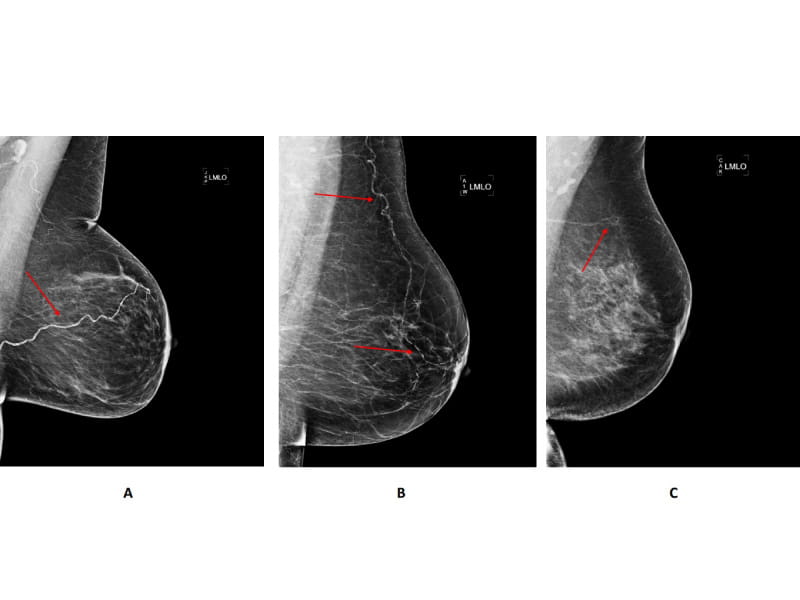What is Mammography?
Mammography is a radiological imaging method widely used for early detection of breast cancer. It’s generally recommended for women over 40 and reveals masses, calcifications, or abnormal structures in breast tissue. Long used as a primary screening method for breast health, mammography can now also be a promising tool for early diagnosis of cardiovascular diseases.
A New Development: Detecting Cardiovascular Risks in Mammography
Recent scientific studies have shown that mammographic images should not only be evaluated for breast tissue abnormalities but also for the presence of calcifications in the breast arteries (arterial calcifications).
This calcification may be related to arterial stiffness (atherosclerosis) and thus could be a harbinger of heart attack, stroke, and other cardiovascular diseases.
What Do Scientific Data Say?
According to a 2023 study shared by the American Heart Association (AHA):
- One in five women undergoing routine mammography was found to have calcification in breast arteries.
- Women with breast artery calcification had a 21% rate of developing cardiovascular disease in the next 10 years.
- In contrast, this rate was about 11% in women without breast artery calcification.
- Women with calcification also had significantly higher rates of hypertension and diabetes.
Arterial Stiffness and Women: Why Is It So Important?
Heart and vascular diseases are among the most common causes of death in both men and women. However, in recent years, while this rate has decreased in men, it remains constant in women. This indicates that heart diseases in women are not being diagnosed early enough.
Cardiovascular diseases in women can often progress with atypical findings and may be noticed later. Therefore, it’s crucial to evaluate common screening methods like mammography for cardiovascular diseases as well.
Breast Artery Calcification: What Does It Mean?
Calcification in breast arteries suggests that similar hardening processes may be occurring in other vascular areas of the body. This can be associated with:
- Atherosclerosis (arterial stiffness)
- Chronic inflammation
- Hormonal changes and estrogen deficiency
- Metabolic syndrome
- Chronic hypertension and diabetes
In short, the presence of this finding in mammography can be an early warning signal and may require additional cardiovascular evaluation.
A New Diagnostic Approach: Reporting Vascular Calcification in Mammography
Currently, mammography reports generally focus only on breast tissue. However, experts now recommend systematic reporting of breast artery calcification.
This can offer the following advantages:
- Earlier identification of women at risk for cardiovascular diseases
- Closer monitoring of risk factors (cholesterol, blood pressure, blood sugar)
- Referral to cardiology if necessary
- Early initiation of preventive treatments
Who Should Be Screened? Who Is at Risk?
Women found to have vascular calcification in mammography are generally:
- Those in the postmenopausal period
- Those with diabetes or hypertension
- Those with a family history of heart disease
- Smokers
- Those with low physical activity
Further tests for cardiovascular health (ECG, stress test, echocardiogram, blood tests, etc.) may be recommended for individuals in this group.
Mammography Can Predict Not Just Cancer, But Heart Disease Too
Mammography is now becoming a tool that can be used to predict not only breast cancer but also heart diseases. Detection of breast artery calcification provides an important opportunity for early diagnosis of heart and vascular diseases caused by arterial stiffness in women.
Reporting this finding in routine mammograms could open a new page in protecting women’s heart health.

Source:
